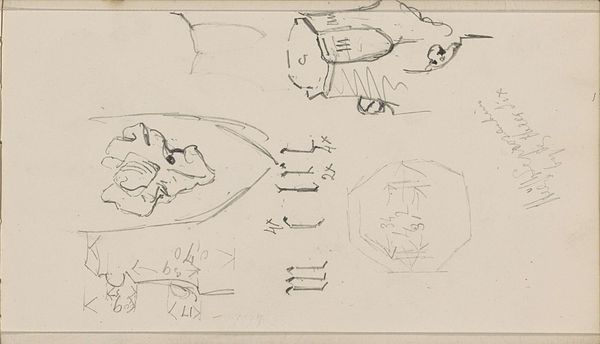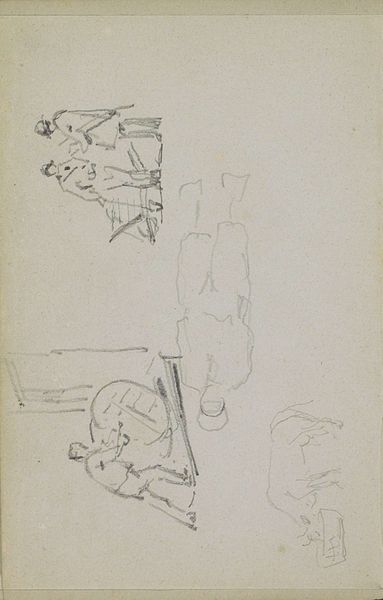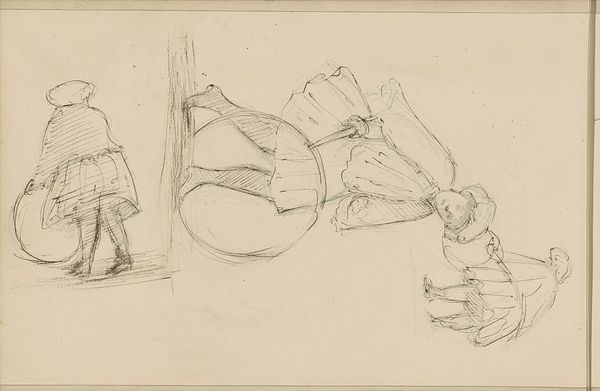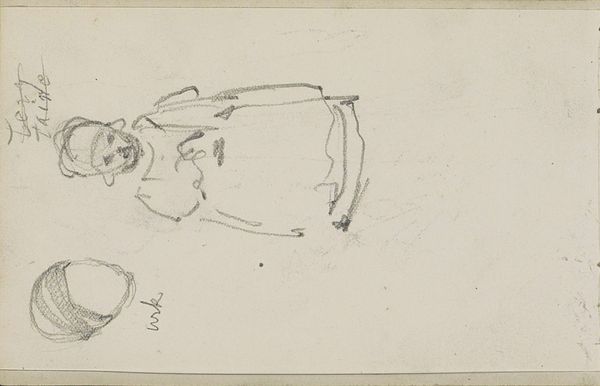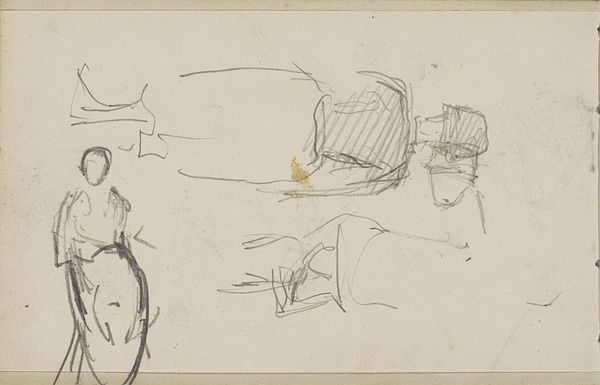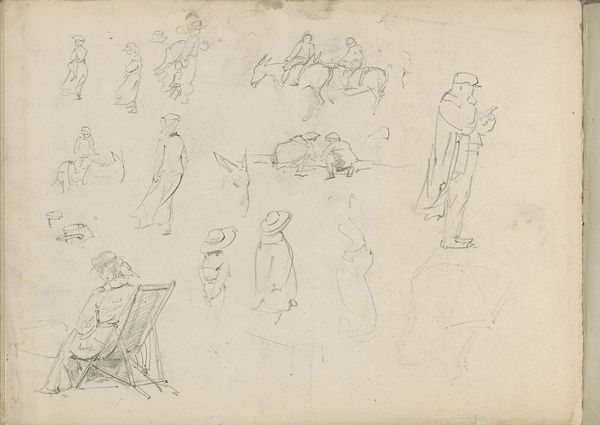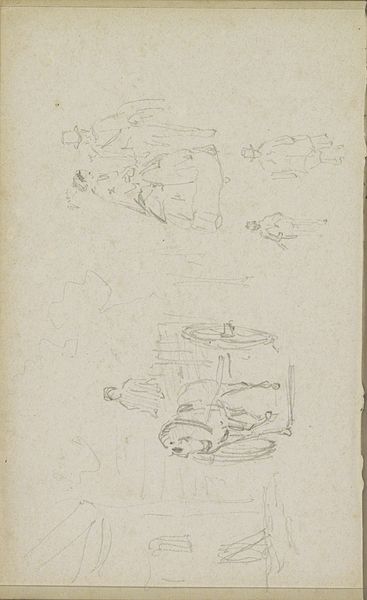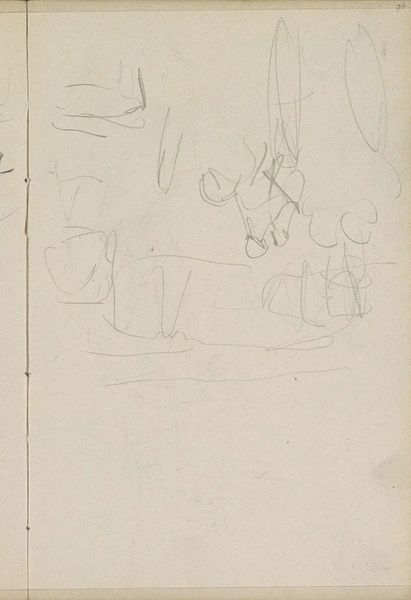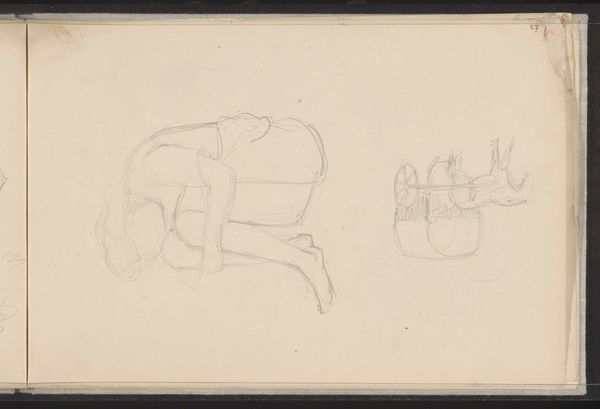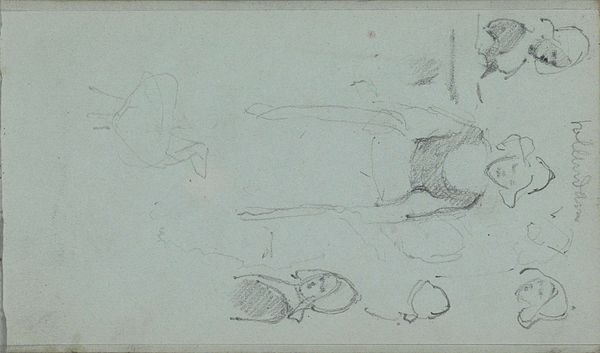
Studieblad, onder andere met kinderen spelend op de vloer en opgestapelde stoelen 1865 - 1913
0:00
0:00
braminehubrecht
Rijksmuseum
drawing, paper, pencil
#
drawing
#
comic strip sketch
#
light pencil work
#
paper
#
personal sketchbook
#
idea generation sketch
#
sketchwork
#
ink drawing experimentation
#
pencil
#
sketchbook drawing
#
genre-painting
#
storyboard and sketchbook work
#
sketchbook art
#
realism
#
initial sketch
Copyright: Rijks Museum: Open Domain
Curator: Well, here we have "Studieblad, onder andere met kinderen spelend op de vloer en opgestapelde stoelen"—or "Study Sheet, Including Children Playing on the Floor and Stacked Chairs"—a drawing made with pencil on paper by Bramine Hubrecht, sometime between 1865 and 1913. I must admit, it looks quite like an idea dump to me. Editor: Dump is harsh! But, yes, it’s a playful tangle, isn't it? A whirlwind of limbs and leaning chairs. It feels very… fleeting. Curator: Exactly. Hubrecht’s sketches, and there are several here, show a focus on everyday life. Look how the scenes are linked through this shared space. There’s an interconnectedness even within the sketchiness. Do you agree? Editor: I see how the recurring figures create a rhythm. Note the careful economy of line, suggesting volume and movement with very little information. Observe the formal arrangement of bodies—how Hubrecht composes them in terms of mass and vector. There's an intellectual scaffolding at work to abstract reality in a pleasing, self-referential structure. Curator: I'm fascinated by the tension between its apparent casualness and the inherent underlying formality you suggest. The layering adds to a narrative feel that makes me feel connected to my childhood. I love the way the mind fills in those half-rendered shapes with the details of life. Editor: Precisely! See, also, the artist’s manipulation of value to draw your eye to one sketch versus another. I'm compelled by her mastery. Curator: I am wondering: does this speak to the way women's art was often considered minor? This has that intimate feel, the unpolished quality that art historians dismiss too often, maybe like a view into her mind. Editor: A powerful observation; something to consider is how the interplay between her choices echoes how consciousness itself might dart from one incomplete idea to the next. Curator: The intimacy we sense looking at it makes me wonder about the world that gave rise to the scenes, maybe the artist’s family! Thank you for helping me connect to this art! Editor: A pleasure, indeed; I can look at the forms now more playfully too, which, in fact, is its intrinsic goal to show an artist finding play in this world of forms.
Comments
No comments
Be the first to comment and join the conversation on the ultimate creative platform.
